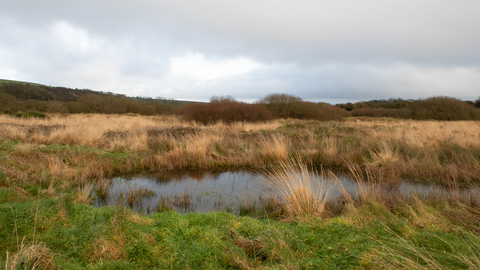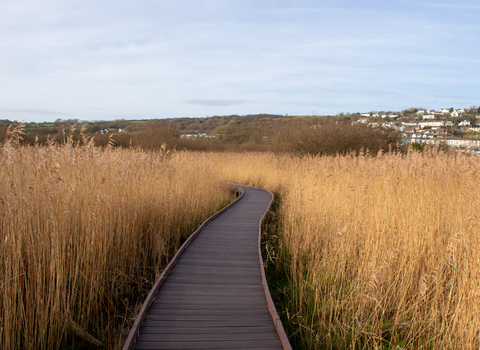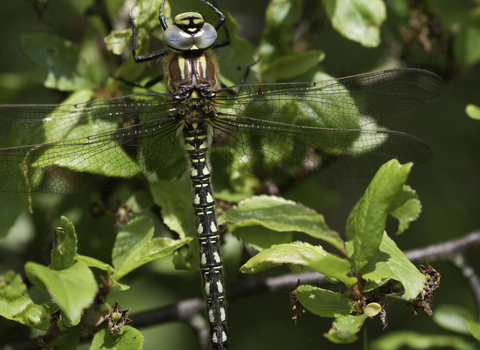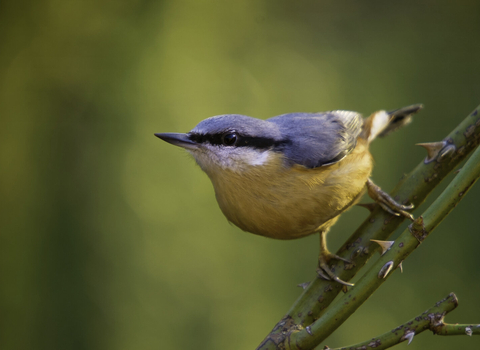
Llangloffan Fen © Grace Hunt
Llangloffan Fen
Location
Know before you go
Dogs
When to visit
Opening times
Open access reserve.Best time to visit
All yearAbout the reserve
The site is bordered to the north and south by arable fields or intensively managed grassland; to the east it is continuous with the central section of the SSSI, while to the west there is a small area of Willow carr. Amongst the species present are Marsh Cinquefoil, Yellow Flag, Purple Moor Grass, and tall fen meadows dominated by Meadowsweet and areas of 1-2 m high tussocks of Greater Tussock-sedge. Water Dock occurs frequently in the wettest parts of the fen.
The site is 60 metres above sea level and once drained westwards to the sea at Aber Mawr. It was later modified by glacial melt water and ultimately blocked by glacial deposits thereby reversing the flow. This left a small central watercourse meandering through flat waterlogged ground, which supports high densities of Trout, particularly fry. Bullhead, River Lamprey, and Brook Lamprey, all features of the SAC have been recorded here.
The ornithological interest is greater in the eastern section of the NNR where Corncrake, Quail and Spotted Crake have all been recorded within the past 5 years. The development of dense rank growth dominated by Nettles along the southern bank of the river in the Trust reserve may offer suitable habitat for Corncrake, and Grasshopper Warblers are amongst the breeding species currently to be found. Barn Owls and Hen Harriers have been recorded hunting over the reserve.
The wetland is a classic haunt of the Otter and home to a remnant Water Vole population and Otters, Polecats and Badger all use the reserve.
A number of Red Data Book, Notable and local invertebrate species occur and the reserve is also well used by reptiles and amphibians.



